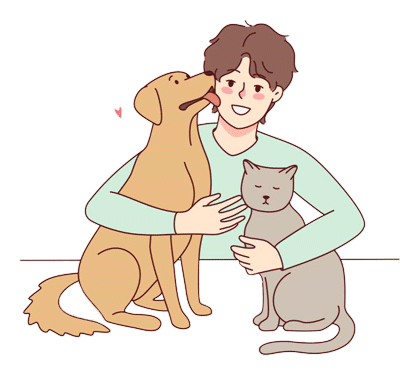Feeling like your dog walks you instead of the other way around? Frustrated by constant leash pulling that turns walks into battles? You’re not alone! But before you throw in the towel, listen up! While lasting change takes dedication, these 5-minute hacks can be your game-changers when it comes to how to stop leash pulling and reclaim peaceful walks you both enjoy. Ready to ditch the frustration and discover the joy of stress-free strolls? Let’s go!
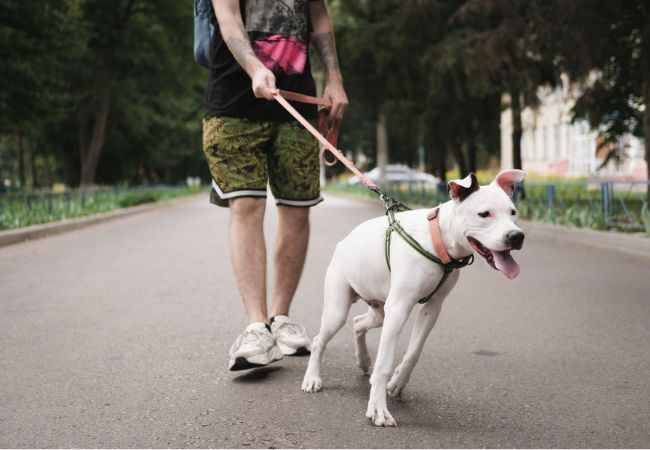
Understanding Leash Pulling: Why Does Your Dog Do It?
Before we tackle the how, let’s delve into the why behind your dog’s leash pulling. Unraveling the reason is crucial for choosing the right solution and addressing the root of the issue.
A. Reasons Behind Leash Pulling Behavior:
- Excitement: Your dog might be overflowing with joy and eagerness to explore, pulling to get to sights and smells faster.
- Frustration: Feeling restricted by the leash, they might pull in an attempt to have more freedom or reach something interesting.
- Lack of Training: Simply put, they haven’t learned the proper way to walk calmly on a leash yet.
- Underlying Medical Issues: In some cases, pulling can be a symptom of discomfort or pain. Consult your vet if you suspect this might be the case.
B. Impact of Leash Pulling on Both Dog & Owner:
For Your Dog:
- Discomfort: Constant pulling can strain their neck, joints, and trachea, leading to potential injuries.
- Unfulfilled desires: Feeling restricted can be frustrating for your dog, impacting their enjoyment of walks.
- Missed training opportunities: When pulling, they’re less likely to be receptive to learning proper walking etiquette.
For You:
- Physical strain: Constant pulling can be tiring and even painful, especially for smaller owners.
- Frustration and stress: The struggle can quickly turn walks into unpleasant experiences.
- Safety concerns: In extreme cases, strong pulling can lead to losing control and potential accidents.
By understanding the motivations and consequences of leash pulling, you can approach the issue with empathy and choose training methods that address the specific needs of both you and your dog. Remember, positive reinforcement and patience are key!
Remember, these hacks are temporary solutions. Consistent training is key to building a well-mannered walking buddy.
Hacks to Stop Leash Pulling in 5mins
Hack #1: Stop & Go Method (The Power of Patience)
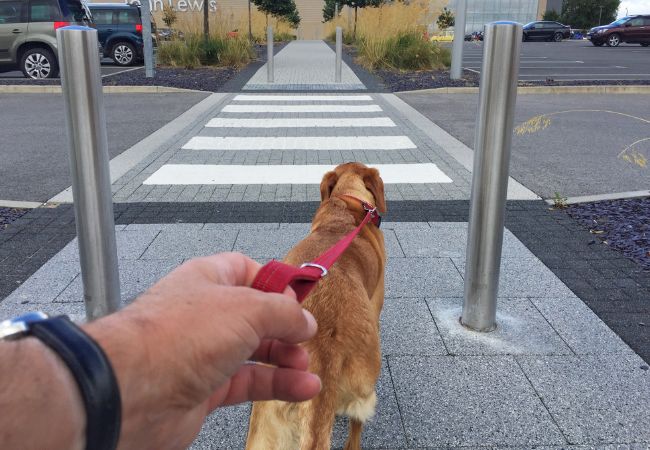
Imagine this: your dog starts pulling. Instead of yanking back, stop! Wait patiently until the leash slackens, then reward with praise and a treat. Repeat this like a broken record (but with way more patience). This teaches your dog that pulling equals no fun, while loose leash walking equals yummy rewards and happy times.
Hack #2: Change Direction & Distraction (Outsmart the Pull)
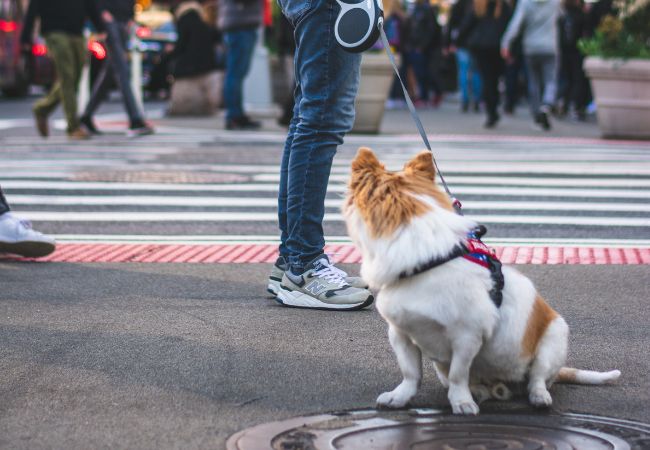
Feeling the pull intensify? Make a sharp turn! This disrupts your dog’s momentum and refocuses their attention. You can also strategically drop a tasty treat on the ground, offering a more interesting alternative to pulling. Remember, high-value rewards and good timing are crucial here.
Hack #3: Reward Calm Walking (Positive Reinforcement is King)
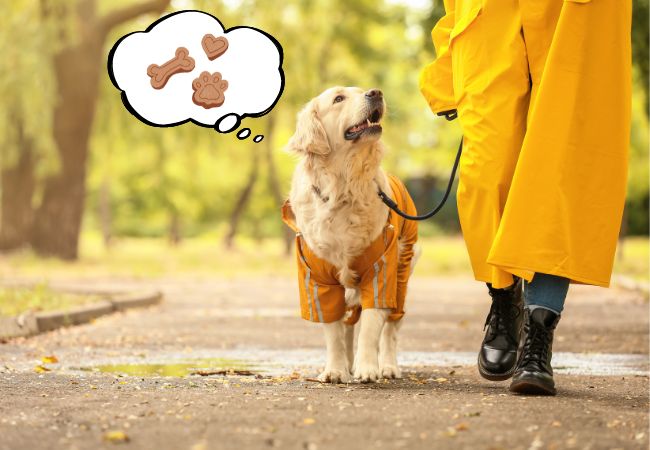
This one’s simple: catch your dog being good and reward them for it! Even the slightest slack in the leash deserves a “Yes!” and a treat. You can also use a clicker for precise timing, marking the exact moment your dog chooses to walk calmly. Remember, consistency is key, so avoid mixed messages (like letting them pull sometimes and not others).
Hack #4: Body Language & Leash Management (Be the Pack Leader)
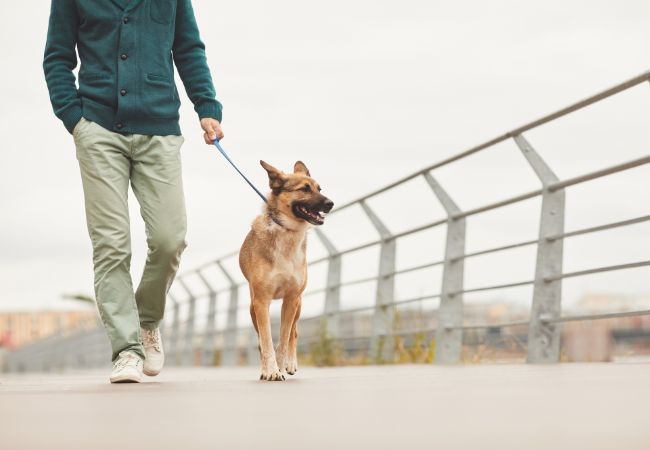
Dogs are masters at reading our body language. Project confidence and calmness during walks, avoiding nervous energy or frustration. Use a short leash for better control and resist the urge to jerk the leash, as this can actually encourage pulling. Choose the right equipment, too. A harness can be better than a collar for some dogs, especially strong pullers.
Hack #5: Short & Sweet Walks (Success Breeds Success)
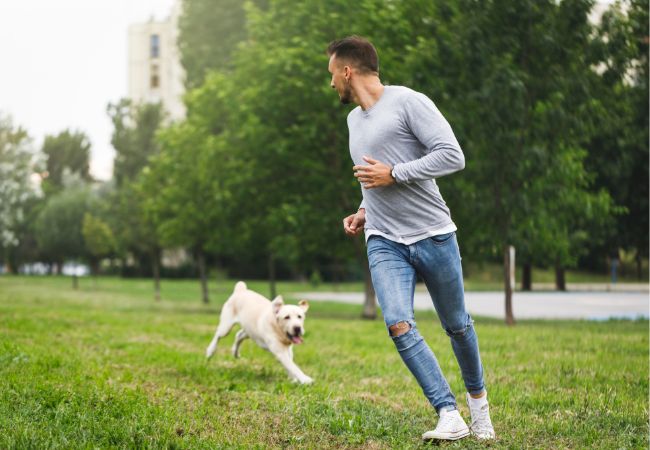
Feeling overwhelmed? Start with short, manageable walks. As your dog progresses, gradually increase the duration. Remember, progress takes time, so celebrate small victories and avoid getting discouraged. Consistent practice is key to long-term success.
Bonus Tip: Lure-Walking (For the Ambitious Pup)

Want to take it up a notch? Try lure-walking. Slowly walk forward, dropping treats on the ground just ahead of your dog’s nose. This encourages them to walk next to you for the delicious rewards. Keep in mind, this technique requires patience and practice, so start slow and gradually increase the distance between treats.
Remember: These hacks are a starting point, not a magic bullet. For ongoing challenges or specific needs, seeking professional help from a qualified dog trainer is highly recommended. Additionally, you can find a wealth of resources online, from blog posts like this one to training guides and video tutorials.
- Step-by-Step Implementation:
Remember, consistency is key! Dedicate short training sessions throughout your daily walks, incorporating these techniques gradually. Be patient, positive, and celebrate even small improvements.
III. Troubleshooting Common Challenges:
- Resistance or reluctance: Don’t force it! Start in quiet, distraction-free environments and increase difficulty gradually. Reward calmness and good behavior instead of punishing pulling.
- Distractions or environmental factors: Be patient and understanding. Manage distractions by using high-value rewards and redirecting their attention. Gradually introduce more challenging environments as your dog progresses.
Train to Walk Without Leash: Start Building a Connection, Not Just Control
While the “From Puller to Pro” hacks offer quick solutions, truly loose leash walking goes beyond simply stopping pulling. It’s about building a strong, harmonious connection with your dog during walks, ensuring a positive experience for both of you. Here’s how to approach loose leash walking training:
Understanding the Basics:
- Focus on Positive Reinforcement: Reward calm walking, not punish pulling. This creates a positive association with walking calmly alongside you.
- Clear Communication: Use consistent verbal cues like “heel” or “with me” to guide your dog and praise them for understanding.
- Equipment Choice: A comfortable harness helps prevent discomfort and redirect pulling. Consider a front-clip harness for additional control if needed.
Building the Foundation:
- Start Indoors: Practice walking calmly on leash in a distraction-free environment like your living room. Reward even small improvements.
- Gradual Progression: Once your dog masters indoor walking, move to quieter outdoor areas, gradually increasing distractions as they progress.
- Lure-Walking (Optional): Use high-value treats to guide your dog into the desired walking position, gradually decreasing reliance on treats as they understand.
Maintaining Consistency:
- Short & Frequent Sessions: Dedicate 5-10 minute training sessions several times a day, rather than one long, frustrating walk.
- Be Patient & Positive: Mistakes happen, don’t get discouraged. Stay calm, patient, and offer encouragement throughout the process.
- Consistency is Key: Use the same techniques and expectations during every walk, both for training and leisure.
Addressing Challenges:
- Distractions: If your dog pulls towards distractions, redirect their attention with high-value treats or toys and calmly continue walking.
- Frustration or Resistance: Avoid forceful corrections, instead, take a break, practice in a calmer environment, and revisit the challenge later.
- Regression: Don’t panic! Revisit basic training, address potential triggers, and seek professional help if needed.
Remember: Loose leash walking takes time, dedication, and a positive approach. Celebrate small victories, build a strong bond with your dog, and enjoy the journey together!
Bonus Tip: Consider seeking guidance from a professional dog trainer if you’re facing specific challenges or want personalized training advice.
With a little patience, consistency, and these handy hacks, you can transform your leash-pulling pup into a walking pro. Soon, you’ll be enjoying those leisurely strolls, side-by-side with your furry best friend, experiencing the joy of a truly connected walk. And remember, the happiest walk is one where both ends of the leash are relaxed and enjoying the journey together!
Check out this helpful guide for even more in-depth strategies: https://www.fearfreehappyhomes.com/dog-behavior-my-dog-pulls-on-the-leash/“
Youtube video link: https://www.youtube.com/watch?app=desktop&v=VwOMIbtoWkk
Learn more about our dog walking services and explore our flexible booking options. https://mypawland.com/dog-walking-services/

Learn more about our dog walking services
explore our flexible booking options

Frequently Asked Questions
The effectiveness of the techniques may vary depending on your dog's temperament and level of training. Some dogs may show improvement after just one session, while others may require more time and consistency.
Patience and persistence are key when dealing with stubborn dogs. Be consistent in implementing the techniques and provide positive reinforcement for desired behaviors. It may take longer to see results, but with patience and consistency, progress is possible.
Yes, the techniques outlined in the guide are suitable for dogs of all ages and breeds. However, it's essential to consider your dog's individual needs and adjust your training approach accordingly.
No-pull harnesses and head collars are designed to discourage pulling without causing discomfort or harm to your dog. However, it's essential to follow the manufacturer's instructions for proper fitting and use to ensure your dog's safety and comfort.
If your dog's leash pulling is linked to fear or anxiety, it's essential to address the underlying issues through positive reinforcement training and behavior modification techniques. Consider consulting with a professional dog trainer or behaviorist for personalized guidance and support.
Yes, treats can be an effective form of positive reinforcement during training sessions. Choose high-value treats that your dog finds particularly enticing and use them to reward desired behaviors, such as walking calmly beside you without pulling.
Consistency is key when it comes to training your dog to stop leash pulling. Aim to practice the techniques regularly during your daily walks, gradually increasing the duration and intensity of training sessions as your dog becomes more proficient.


